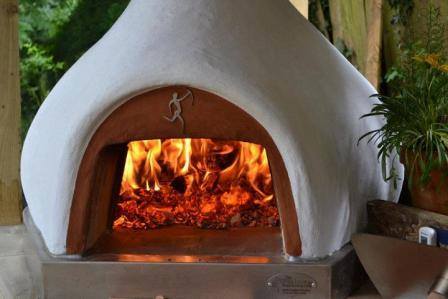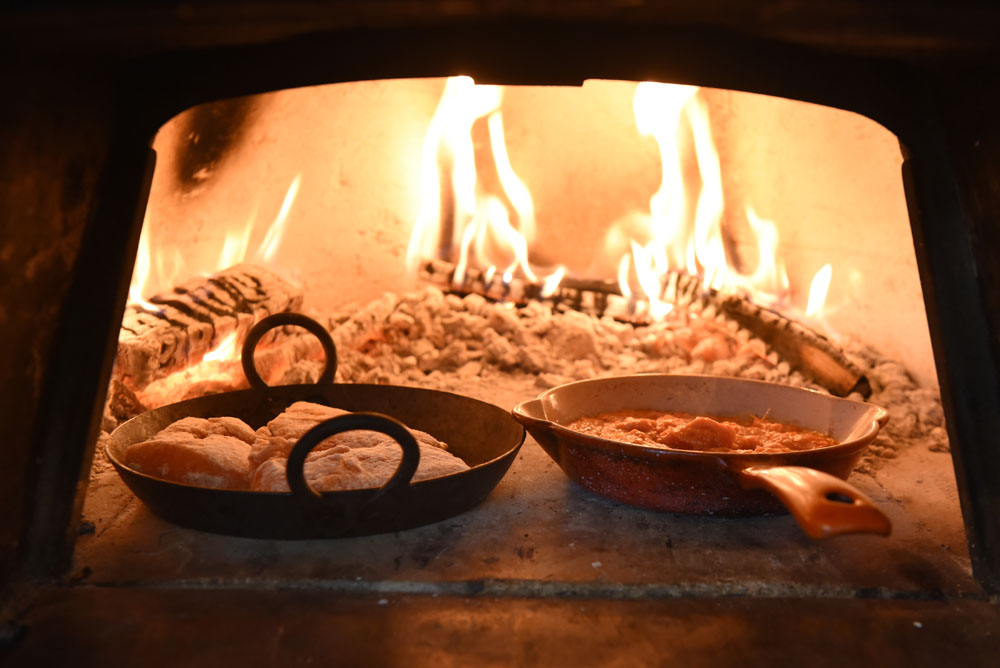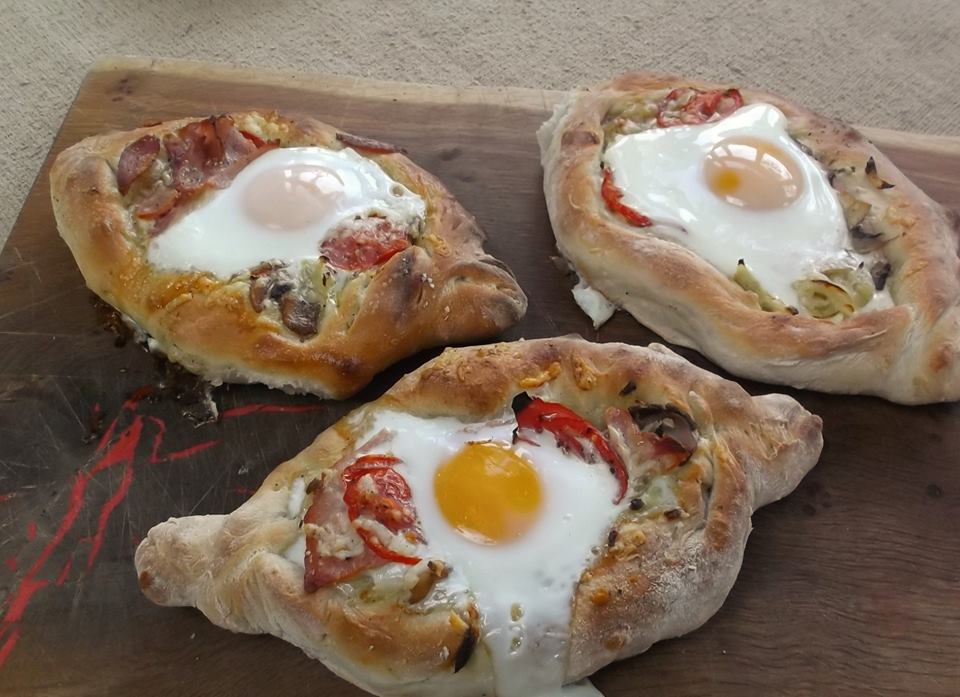Firing up your wood fired oven – how hot is hot?
How hot is the oven?
This is the question we are asked more than any other here at the cooking school on our wood fired classes. The answer is always – “it depends”.
If you think about it, your thermometer can only tell you the temperature of where it is or where it’s pointing if it’s an infra-red zapper type. Here at Manna from Devon we try to encourage people to cook more intuitively, to develop a feeling for the oven and its heat – yes it’s hot but how hot?

We’ve been firing up the ovens more than ever this year
So the test we use is how long you have to hold your hand in the oven before your fingers start to tingle? This will give you an idea of the air temperature. It may sound like a health and safety nightmare but we are not encouraging you to stick your hands in and leave them in there for as long as possible; it’s not a test of your pain threshold.
In addition to the air temperature, you also need to have built up some heat in the thermal mass of your oven so that the oven is stable ie not heating up and cooling down very quickly if there’s no fire inside. Make sure the oven’s been heating up for a while – we give our medium oven a good hour or so and our little one about 45 minutes to become stable.

Building up the fire, embers and retained heat
Here’s how the hand test works: put your hand in the oven about 6cm/2inches above the oven floor where you’ll be cooking, not touching the oven itself. Then start counting as if you’re in a parachute jump – “One Mississippi, two Mississippi, three Mississippi, four Mississippi, five Mississippi, six Mississippi….”
This will give you the air temperature which is really what we’re interested in because that’s the temperature your recipe is talking about. Unless you’ve got a thermometer dangling in the middle of your oven, you will find it difficult to measure it by any other means than the hand test which is why we’d like you to start developing a “feel” (literally) for your oven.
So what are your tingling fingers actually telling you? Well hang on a minute – let us explain:
No Mississippi – if you can’t get your hand in the oven at all, then the air temp is super hot and will be more than 400°C/750°F. At this temperature, you can cook pizzas, pitta breads, some other thinner flatbreads, prawns, squid, fish fillets etc. You need to keep an eye on whatever it is you’re cooking as it can go from perfect to err, well, black as soon as you’ve turned your back. You’ll only ever achieve this temperature with a good fire burning in the oven.
One Mississippi – Between 300°C/570°F and 400°C/750°F. If you can keep your hand in for the count of One Mississippi but no more, you’re good to cook pittas, prawns, scallops, minute steaks, lamb kebabs or koftas. Again, keep an eye on things as it all happens pretty quickly.

Good lot of flames for grilling fish dishes
Two Mississippi – Between 275°C/520°F and 300°C/570°F. Still pretty high here but we can get bigger things in the oven without risking them blackening before cooking through so think about cooking baguettes, foccaccias, thinner flatbreads, spatchcocked chicken, butterflied leg of lamb, barbeque chicken wings and thighs, chipolata sausages, trays of veggies for roasting etc. We have a piece of good wide aluminium foil on hand in case things are colouring up too quickly.
Three Mississippi – Between 250°C/480°F and 275°C/520°F. At three Mississippi, things are calmer and you can do thicker flatbreads such as pissaladiere and khachapuri, some larger steaks (we do a 1kg piece of rump steak 3cm thick – perfect at this heat).

Woodfired khachapuri – properly delicious!
Four Mississippi – Between 220°C/430°F and 250°C/480°F. This is your bread setting so use it for baking bigger loaves such as sourdoughs, wholemeals etc. Also great for bigger chunks of roast meats like legs of lamb, whole chickens, ribs of beef.
Five Mississippi – Between 175°C/350°F and 220°C/430°F. Cooling down now so the oven is great for cakes, pastries, sweet doughs.
Six Mississippi – less than 175°C/350°F. Cooling nicely but with still a lot of retained heat if your oven has a good thermal mass so perfect for packing in those slow braises, slow roasts such as shoulders of lamb or pork, stocks, fruit cakes, rice puddings; shut the door and come back later.
As for the flames themselves, we probably only have a fire burning at 0-2 Mississippi – this will give a good grilling effect and some smokiness. At 3 Mississippi, we’ll be cooking with a good bed of embers in the oven but no flames as such and are more reliant on the retained heat in the thermal mass. From 4 Mississippi onwards, it’s just about retained heat and you can shut the door for longer, even cooking.

Nice bed of embers
We know this is a lot to take in but if you practise the “feel” for what’s going on in the oven every time you light it up, you will soon develop an understanding and know instinctively when to put things in. Remember people have been cooking with fire for thousands of years and it’s only in the past 150 years or so that we’ve become reliant on electric or gas ovens with temperature control. Try to get out of the habit of thinking of the temperature and start thinking about how much energy is in the oven and it all becomes a much more intuitive process.

